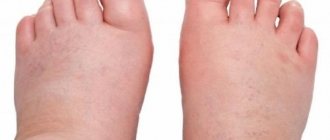Read in this article:
- What is air humidity and what does it depend on?
- Humidity standards
- How to determine air humidity?
- Why is low humidity dangerous?
- How to maintain normal humidity?
- Low air humidity and health
Indoor air humidity is an important component of the microclimate, which affects not only a person’s comfort, but also his health. A long stay in a room with high or low humidity can cause poor health and even some diseases. That is why it is necessary to know how to determine this indicator and, if necessary, change the amount of moisture contained in the air.
What is air humidity and what does it depend on?
The air we breathe always contains a certain amount of moisture in the form of water vapor. If the humidity level reaches 100%, the air can no longer hold as much water. Then it settles on surfaces in the form of condensation or it starts to rain. Accordingly, a humidity of 50% means that the surrounding air contains exactly the same percentage of the maximum amount of moisture that it can hold.
Humidity directly depends on temperature: the hotter the air, the lower it is. There are other factors that influence this indicator:
- Ventilation – forced supply systems facilitate the flow of air into the room, which causes the relative humidity in it to decrease;
- Weather outside - in the cold winter months the air is drier, on rainy days the humidity is higher (air from the street gets indoors in any case);
- Heating – radiators and heaters simultaneously increase the air temperature and activate natural ventilation, which contributes to low humidity;
- Air conditioners - the use of such devices, even in cooling mode, dries the air, since it collects moisture in condensation and removes it through drainage pipes;
- Plastic windows and insulated walls impair ventilation, so humidity increases.
The level of humidity is affected by where you live - near bodies of water the indicator is higher. Living conditions also play a role. For example, if a large amount of laundry is often dried in an apartment after washing, this will contribute to an increase in humidity. The same goes for cooking without a hood. True, in these cases the indicator does not increase too noticeably and for a short time.
table 2
| OPTIMAL PARAMETERS | ACCEPTABLE PARAMETERS | ||
| Temperature deg. WITH. | Relative Humidity % | Temperature deg. WITH. | Relative Humidity % |
| 19 | 62 | 18 | 39 |
| 20 | 58 | 22 | 31 |
| 21 | 55 | ||
Note : air speed – no more than 0.1 m/s.
Knowledge of humidity in meteorology is of great importance for weather prediction.
Go to section: 2.2 Methodology and role of the experiment
Humidity standards
The optimal humidity level is considered to be 45-60%. But this is an average and may vary depending on certain conditions. For example, in the cold season the norm is 30-45%, and in the warm season – 30-60%.
Normal air humidity is determined separately for each room:
- In the dining room, kitchen or bathroom, a humidity of 40-60% is allowed, since such rooms have sources of moisture that are often used;
- In the children's room it is recommended to maintain the indicator within 45-55%;
- For the bedroom, the optimal humidity is 40-50%;
- In a library, it is not advisable to allow humidity to rise above 40%, as this may adversely affect books.
In general, it is generally accepted that 30% or less is low air humidity, and above 65% is high. Both options are harmful to the body.
May worsen asthma, but at the same time help asthmatics
People who suffer from asthma know that breathing in cold, dry air can inflame their airways. However, hot, humid air can do the same thing.
A study published in the American Journal of Respiratory and Critical Care Medicine in 2012 found that humid air can cause narrowing of the airways. A dose of pre-administered anti-asthma medications can help neutralize this negative effect.
mygifdump.tumblr.com
The paradox is that at the same time, moist air can have an adverse effect.
How to determine air humidity?
So, to create an optimal microclimate in terms of humidity, you need to solve two issues: determine the current indicator and take measures that will allow you to regulate it. The easiest way to measure is with a hygrometer. There are different types of such devices, the most convenient for domestic use is electronic. The display shows humidity indicators, and in many models also temperatures.
But not everyone has a hygrometer at home, so the question may well arise of how to determine the air humidity in a room without instruments. There are several ways to do this:
- Using a glass of water, place the container in the refrigerator and wait until the temperature of the liquid reaches +5°C. Then you need to place the glass in the room and watch for condensation. If water droplets form on the walls within 10-15 minutes, then the air is dry. If it takes longer, the humidity is normal or high. It is worth considering that this is a very approximate result;
- Using a thermometer, you need to measure the temperature in the room and write down the reading. Then wrap the device head with a moistened cloth or cotton wool and see what the temperature will be after 10 minutes. The second indicator should be subtracted from the first indicator and the result assessed using the Assmann table;
- The most exotic way is with the help of a fir cone that recently fell from a tree, but did not have time to dry out. The cone must be placed at a considerable distance from radiators and air conditioners, and then observed. If the scales are pressed towards the middle, the humidity is excessive; if they protrude, the humidity is insufficient.
Drying house plants indicate low humidity in the apartment. But none of the listed methods guarantees an accurate result. It is best to use a hygrometer.
Health harm from mold
A particular danger to human health is mold, whose toxic compounds enter the lungs and are absorbed through the skin. Common negative consequences of mold include asthma, pneumonia, stomach upset, headaches, and nosebleeds. Many types of mold are pathogenic. Long-term exposure can lead to internal bleeding, kidney and liver damage, and emphysema. Diseases caused by mold are called mycoses.
It has also been revealed that, for example, groundnuts affected by mold have such a strong concentration of toxic substances that they can cause cancer.
According to studies by European scientists, mold (not it, but its spores) can cause such a serious blood disease as leukemia.
City dwellers spend most of their time in residential premises and, as a rule, these premises are closed (be it an apartment or an office). That is, we breathe only the air that is in the room. Our lungs are excellent at filtering out many microbes, but mold spores have their own peculiarity: they settle deeply in the lungs and even penetrate into the lung tissue itself. It was also found that in places where allergy sufferers and asthmatics lived, mold was present in 80 out of 100% of cases, which indicates the most likely cause of the disease.
There are even types of mold whose spores can cause diathesis in children, allergies (which over time, if no action is taken, can develop into asthma).
The cause and main accelerator of the spread of mold and its toxic spores is precisely high humidity.
Why is low humidity dangerous?
A person consists of an average of 60% water, so low humidity is very dangerous for the body. Excessive dry air causes many negative phenomena:
- Irritation of the mucous membranes of the throat and nasal cavity - dry surfaces crack, opening access to harmful microorganisms;
- Static electricity is generated in the room, causing dust particles to rise into the air. This provokes the spread of bacteria, dust mites, allergic manifestations;
- Nails and hair dry out, the skin loses elasticity, premature wrinkles, dermatitis, peeling, and microcracks appear;
- Dryness of the mucous membrane of the eyes results in unpleasant itching;
- The blood gradually thickens, its movement slows down, and the person begins to feel weak. At the same time, the load on the heart increases noticeably;
- The viscosity of fluids in the body increases, for example, gastric and intestinal juices, which causes disruptions in the digestive system;
- Constantly inhaling dry air through the nose leads to pain and bleeding.
Low humidity is especially dangerous for children, because they have more sensitive skin and respiratory systems than adults. In rooms with dry air, a child may develop a cough; his body becomes more susceptible to virus damage due to decreased immunity and dry mucous membranes.
Folk signs
When the weather changes, the moisture content in the air mass changes. Folk signs related to air humidity say that if clear and dry weather is expected, smoke from the stove will rise vertically. Before it rains, it spreads along the surface of the earth.
If there is severe frost and dry air, the wood in the stove burns with a bright flame and burns out in a short time. With a pale, dim flame, a large amount of soot produced and insufficient draft, there is a high probability of high moisture content in the air masses.
In the evening, in the absence of wind, the air temperature drops. Above the ground you can often see vaporous moisture - fog. You can also judge the upcoming weather by his behavior. According to signs, rising fog indicates future rain. If it lies on the surface of the ground, dry weather can be expected. Night and morning fog in the valley, which disappears with sunrise, indicates good weather ahead. The same forecast can be made in the presence of heavy morning dew.
If the moisture content in the air masses increases, many flowers experience contraction of inflorescences. The smell of rowan becomes sharper. Coniferous trees have drooping branches. When the air is dry they rise.
The moisture content in air masses is an important parameter that affects the human body and the entire environment.
How to maintain normal humidity?
If the humidity level in the room is too low, the best solution is to use a special device - a humidifier. There are several types of such devices:
- Traditional - a special reservoir is filled with water, which then goes to the filter or cartridge. The fan drives air through them and returns it to the room cleaned and humidified;
- Steam - the water is heated, the air is saturated with moisture due to hot steam;
- Ultrasonic - the hearth is fed onto a plate that vibrates under the influence of ultrasound. The dispenser sprays water in the form of microscopic particles that are held by air molecules.
Humidifiers have many useful additional functions: they automatically turn off, can work as fragrances, purify the air using filters, and switch to quiet night mode. But their main advantage is the ability to quickly increase air humidity to a normal level and maintain it for a long time.
May lead to dehydration
Nickelodeon
Constant sweating in hot weather can be very uncomfortable: think about your feet sticking to leather seats.
But at the same time, this can lead to more negative consequences - dehydration. “When you sweat, you lose important electrolytes for the body, such as sodium and chloride,” explains Dr. Nesheiwat. “Therefore, it is very important to maintain fluid balance in the body to avoid fainting, muscle cramps and overheating, especially in the summer.”
So don't forget to drink as much water as possible when the thermometer goes off scale and the air humidity rises.
Do your eyes hurt due to dry air? There is an alternative solution
Recently, an innovative solution to the problem of dry eyes – Delfanto® capsules – has gained great popularity. It has a number of recognized advantages:
- The active substance - MAQUIBRIGHT® extract - has a targeted effect on the lacrimal glands, activates the process of tear production, eliminates the causes of dry eyes and provides hydration with your own tears.
- The product is produced in accordance with international quality standards.
- Taking the capsule orally once in the morning is much simpler and more comfortable than instilling drops and ointments under the eyelids throughout the day.
Delfanto® can be taken both simultaneously with complex treatment and independently of it. If your eyes become dry from dry air, in addition to treatment, you should take steps to increase the humidity. For this:
- do wet cleaning more often;
- get indoor plants with large leaves;
- use humidifiers;
- reduce the use of fan heaters.
These measures are necessary if the humidity level drops below 30. There is no need to overdo it, as mold will develop from excessive dampness. And reasonable preventative measures should be taken without waiting until you feel and see signs of dry eyes in the mirror.










